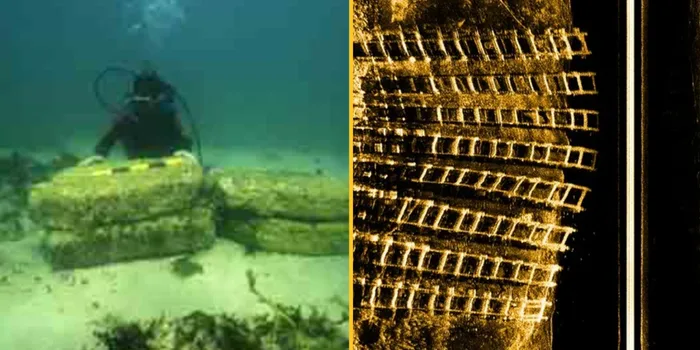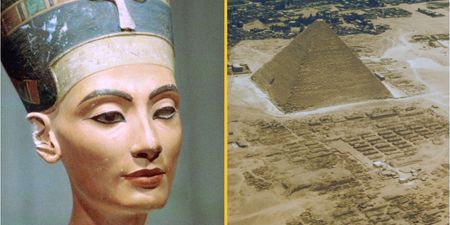Some believe it predates the oldest known civilisations
The remains of what is believed to have been an ancient civilisation have been found underwater, and the repercussions could be seismic.
Back in December 2000, a huge city stretching more than five miles long and two miles wide, was discovered 120 feet underwater in the Gulf of Khambhat, western India.
The discovery, named the Gulf of Khambhat Cultural Complex, was made by the National Institute of Ocean Technology (NIOT) as they performed routine pollution surveys in the region.
Teams then used sonar technology to map out structures on the seafloor, indy100 reports.
When human bones and teeth were recovered from the site, carbon dating found them to be nearly 9,500 years old. This made them older than the Bronze Age Indus Valley civilisation, known as the Harappan, which was the earliest known urban society of the Indian subcontinent.
This could therefore have huge repercussions on previously held theories about humanity’s development.
The chief geologist on NIOT’s scientific team was Badrinaryan Badrinaryan. He wrote in a piece at the time for Archaeology Online that the findings suggested the Harappans were “descended from an advanced mother culture that flourished at the end of the last Ice Age that was then submerged by rising sea levels before ‘history’ began.”
He continued: “It was generally believed that a well-organised civilisation could not have existed prior to 5500 [before the present day]. Many were reluctant to accept that the flood myths mentioned in many ancient religious writings held some grains of truth.”
He insisted that the discovery “clearly established the existence of an ancient civilisation that was submerged in the sea” but that “conservative archaeologists” found this “hard to accept.”
In the following months and years, some experts have agreed with some of the conclusions drawn by the team.
In 2002, India’s leading expert on the ancient Indus script, Iravatham Mahadevan, told Frontline that he agreed the structures were most likely built by man.
But he said the artefacts recovered could simply have washed in from elsewhere.
The main controversy centres around a piece of wood found on the site, which was carbon dated to an age of 9,500 years.
This was then used as a reference to establish the age of the entire site.
But some specialists have questioned whether so much importance should be attributed to the age of the wood.
Akso Parpola of the University of Helsinki said: “First, can the age of the wood found under the sea be correlated to the antiquity of the site?
“Secondly, is this one piece of evidence enough to conclude the antiquity of the site?
“Thirdly, is the underwater site a secure context to gauge the antiquity of the site?”
He asked: “Can radiocarbon dating and thermoluminescence give reliable dating for ancient periods?”
Whilst he admitted that he seen “some interesting materials that seem to occur only in this place”, he added that “the problem with this site is that there is very heavy tidal influence and the sands are shifting all the time.”
He continued: “So when we find flat objects here it seems to me perfectly possible that this flattening is done by sand activity – erosion by the sand.
“Even the holes that we found in the stones got from this area may not be due to human drilling. A flat object could have been stuck on a stone and started rolling around because of water activity (currents). So, these holes may have occurred naturally.”
Some still reckon the discovery could be an excitement development though.
Film-maker Graham Hancock – who has attracted controversy in the past for his conspiracy theories surrounding ancient civilisations and ‘lost lands’ – told the BBC the discovery could shake up the historical timeline of humanity.
“There’s a huge chronological problem in this discovery,” he said. “It means that the whole model of the origins of civilisation with which archaeologists have been working will have to be remade from scratch.”
More than two decades after the discovery there are still no firm answers, and exploring the site is difficult due to how dangerous the waters are.
Who knows whether we’ll ever find out the truth.
Related links:
















































